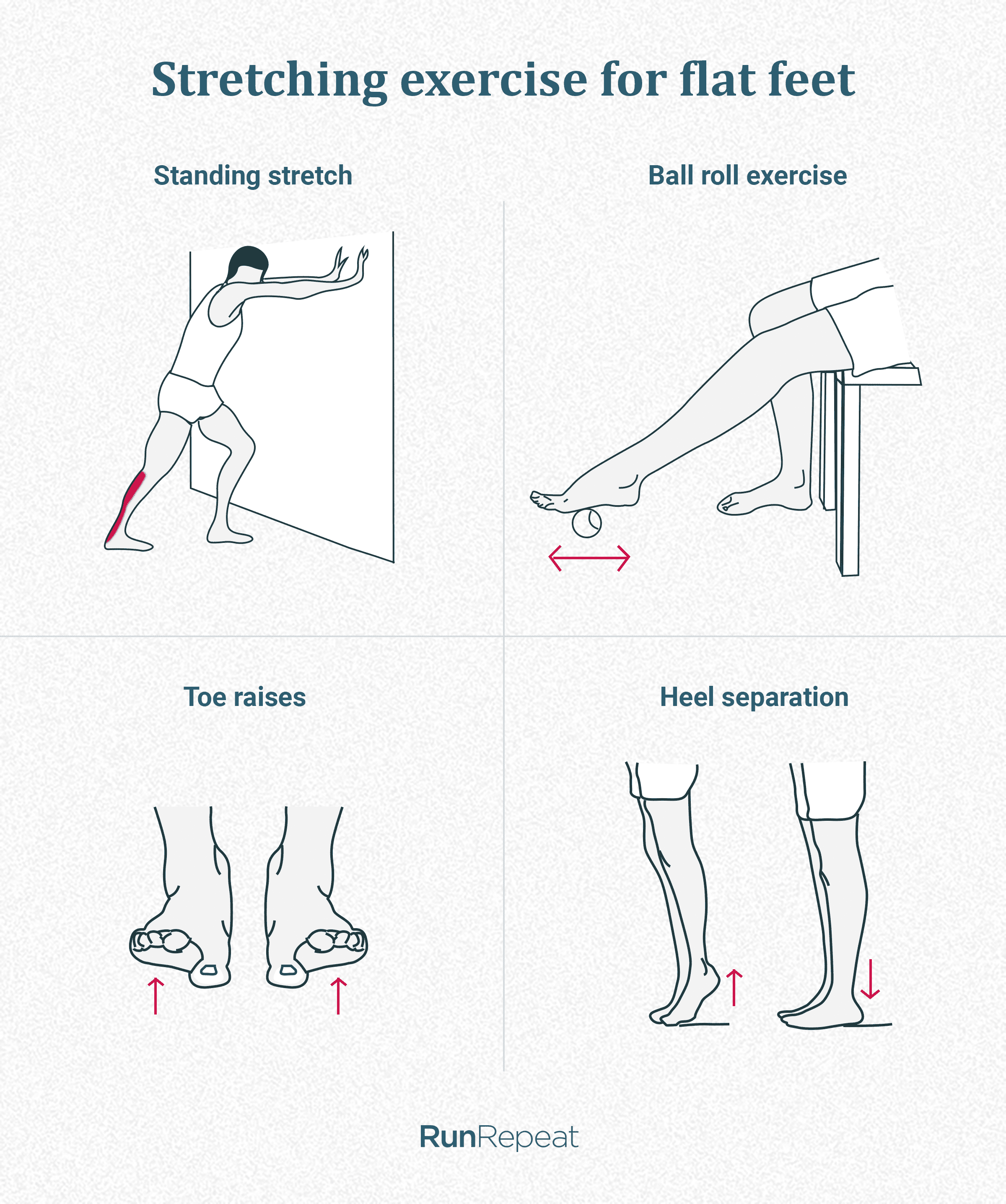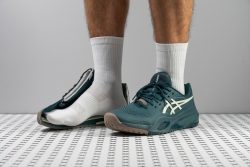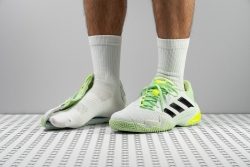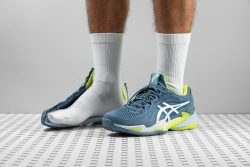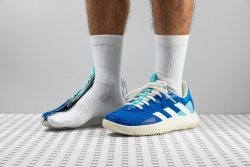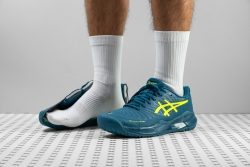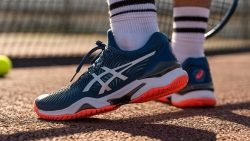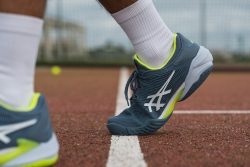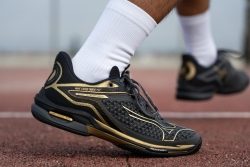5 Best Tennis Shoes For Flat Feet in 2025
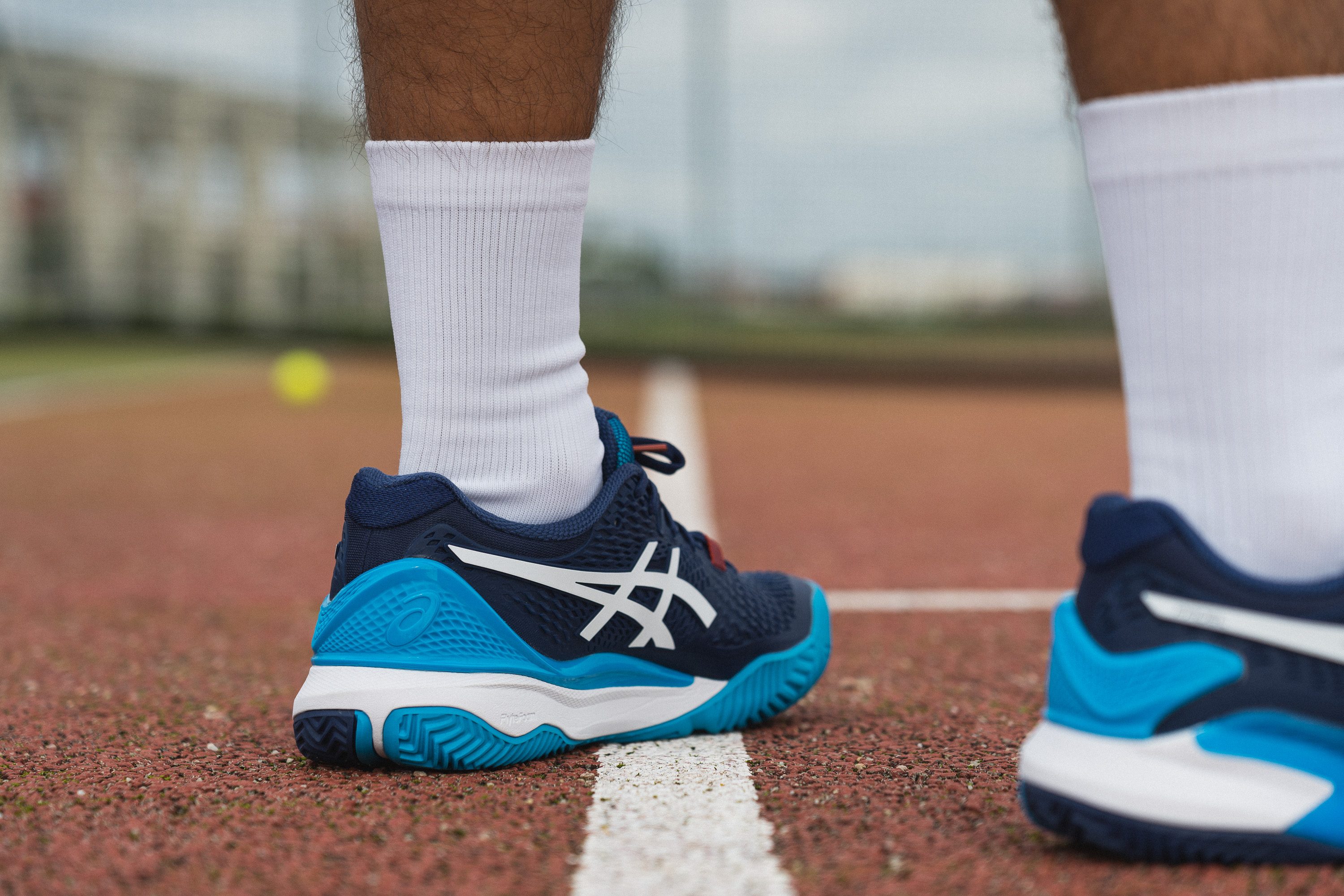
We buy shoes ourselves. We earn commissions when you buy through us, at no extra cost. Why trust us
No brand specifically positions its tennis shoes as flat-foot friendly but there are certain characteristics that make some shoes more appropriate for this condition than others.
Whether your case of flat feet is painful or not, you have to be sure that you are getting a supportive shoe for this dynamic sport.
To make your search faster and easier, we have tested dozens of tennis shoes and picked out the best options for flat feet.
How we test tennis shoes for flat feet
We keep our standards high when it comes to testing and selecting shoes for a certain health condition. In case of flat feet, we pay special attention to the shoe’s stability and the factors contributing to it, i.e. torsional rigidity, heel counter stiffess, platform width, etc.
- We use manual tests, tools, and even some specialized machinery to get every measurable data point for the most comprehensive review.
- We test every shoe on hard court to assess its on-foot performance.
- We buy all tested shoes ourselves to prevent bias and brand loyalty.
Best tennis shoes for flat feet overall
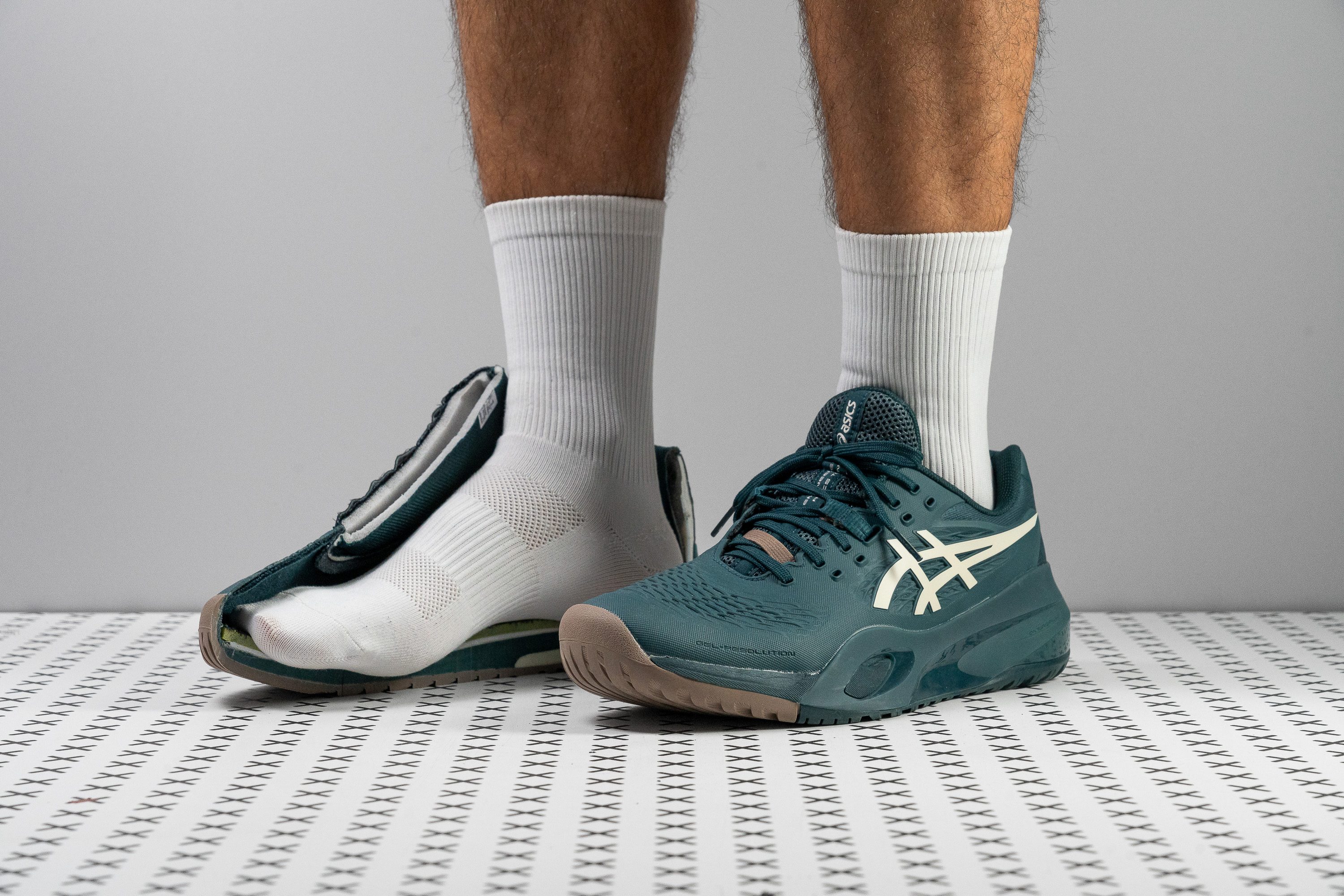















































What makes it the best?
After countless matches of rallying, our feet ultimately felt confident in the ASICS Gel Resolution X. Backed up by our lab results, we found it to be exceptionally stable through its stiff structure, wide dimensions, and grippy base. Its undeniable support makes it lead the pack among tennis shoes for flat feet.
We performed hard dashes and split steps during our playtests, and the shoe doesn’t give in to ankle twists. After cutting the shoe open, we found a rigid frame called Dynawall that inhibits excessive lateral motions. We had no second thoughts about chasing the ball! Based on its performance in our manual assessments, we awarded it the maximum 5/5 scores for both torsional rigidity and heel counter stiffness.
The expansive base kept our feet well-planted, and we had no room to lose our balance. Our caliper confirms it’s one of the widest tennis shoes we’ve recorded at 116.5/94.1 mm.
Another feature that kept our dynamic movements in control is the superior traction. The AHARPLUS rubber generated lots of friction in our test and earned a solid 0.89 score. Being 12.7% grippier than average, it handles hard stops effortlessly.
Because of its support features, it emerged heavier than average at 14.7 oz (417g). Players seeking an agile and lightweight feel will not be satisfied with Resolution X.
Pros
- Unbeatable durability + 6-month warranty
- Impeccable stability and support
- Perfect for wide feet
- Customizable Dynalacing
- Fantastic outsole traction
- Great impact protection
- Energy return is better than in v9
- Generously padded interiors
Cons
- Unusual fit and sizing
- Raised collar is a mixed bag
- Long break-in period
- Heavier than most tennis shoes
Best tennis shoes with a wide platform for flat feet
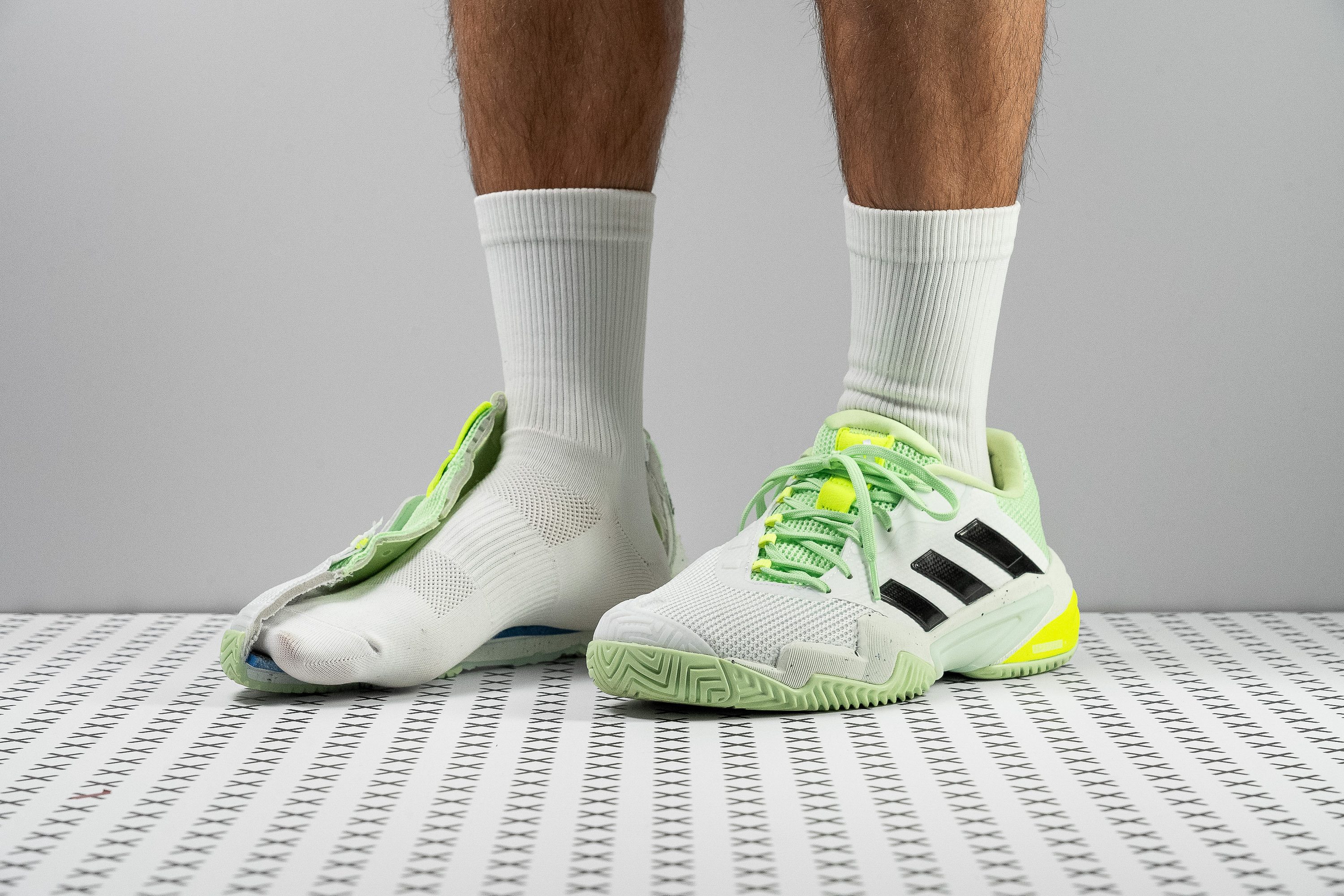















































What makes it the best?
The Adidas Barricade 13 has a robust construction that holds our feet in position. We felt in control on the court as our lab tests confirmed its massive and sturdy base and versatile Adiwear outsole. Among flat-feet tennis shoes, this pair stands out for its wide platform.
Using our caliper, we validated our observation and confirmed that Barricade 13 is one of the widest tennis shoes we’ve seen. Measuring 115.4/95.3 mm in the forefoot and heel, it offers generous room to find our footing vs. the 111.8/89.6 mm average.
True to its name, we didn’t feel like our feet were swimming inside the shoe because it felt like we had barriers on both sides. We didn’t roll over the edge during aggressive lateral movements. It takes a lot of effort to twist the shoe, as seen in its 4/5 torsional rigidity score.
The shoe has a sturdy framework called the Torsion System, which incorporates a firm 26.1 HA foam to stabilize the ride further. We felt surefooted and confidently in control throughout our matches. Turning to the outsole, we observed a mix of sharp and flat herringbone patterns delivering a solid mix of grip and give.
However, the toebox is slightly narrow, which made us experience a bit of toe jamming in the first few games. Those with square or high-volume feet should find shoes with a non-restrictive fit.
Pros
- Exceptional stability and arch support
- Wide and steady platform
- Hard-wearing outsole with a 6-month guarantee
- Fantastic outsole grip
- Sufficient impact protection
- Great court feel
- Highly secure foothold and lockdown
Cons
- Upper is not the most durable
- Cushioning lacks bounce and responsiveness
Most durable tennis shoes for flat feet
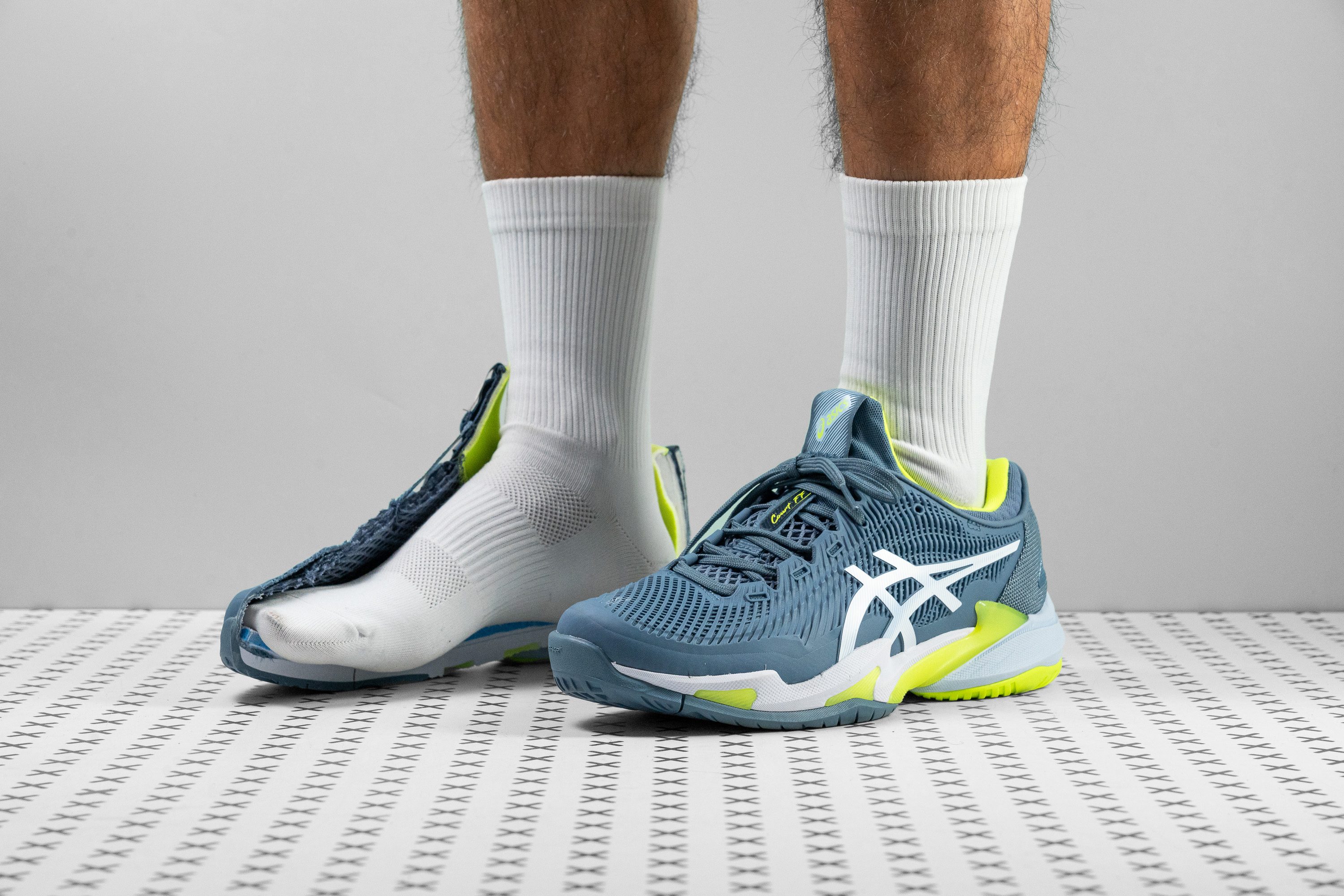














































What makes it the best?
Our playtests with the ASICS Court FF 3 tell us it's perfect for aggressive players who move boldly to secure points. In the lab, we verified the stability and premium cushioning it offers. Meanwhile, its outsole gives us the control we need on the court without wearing it out, making it our best durable flat-feet tennis shoe.
The outsole’s performance is a true standout because of its exceptional durability in the outsole. We put the rubber under our high-speed Dremel and only sustained a minimal 0.4 mm dent vs. the 0.8 mm average! What’s even more mind-blowing is its capacity to grip, brake, and slide in a heartbeat.
We never feel like toppling over as we take explosive or dynamic footwork. The TWISTRUSS system includes a stiff TPU that wraps our midfoot firmly so that we stay centered. Its secure foothold is evidenced by its maximum 5/5 torsional rigidity rating in our manual twist test.
The midsole features a dual-density setup of the FlyteFoam cushioning. The main foam is a firm 31.5 HA to secure our balance, while the softer 27.0 HA foam under the heel softens our landings.
While the shoe displays exceptional durability in most areas, we can’t say the same for its heel. Players who often puncture the heel padding of shoes should try another pair.
Pros
- Top-notch abrasion resistance
- Excellent impact protection
- Unmatched foot containment
- Exceptionally stable platform
- Fantastic grip and sliding
- Very comfortable in-shoe feel
Cons
- Lacks breathability
- Not for wide feet
- High price
Tennis shoes for flat feet with the best shock absorption
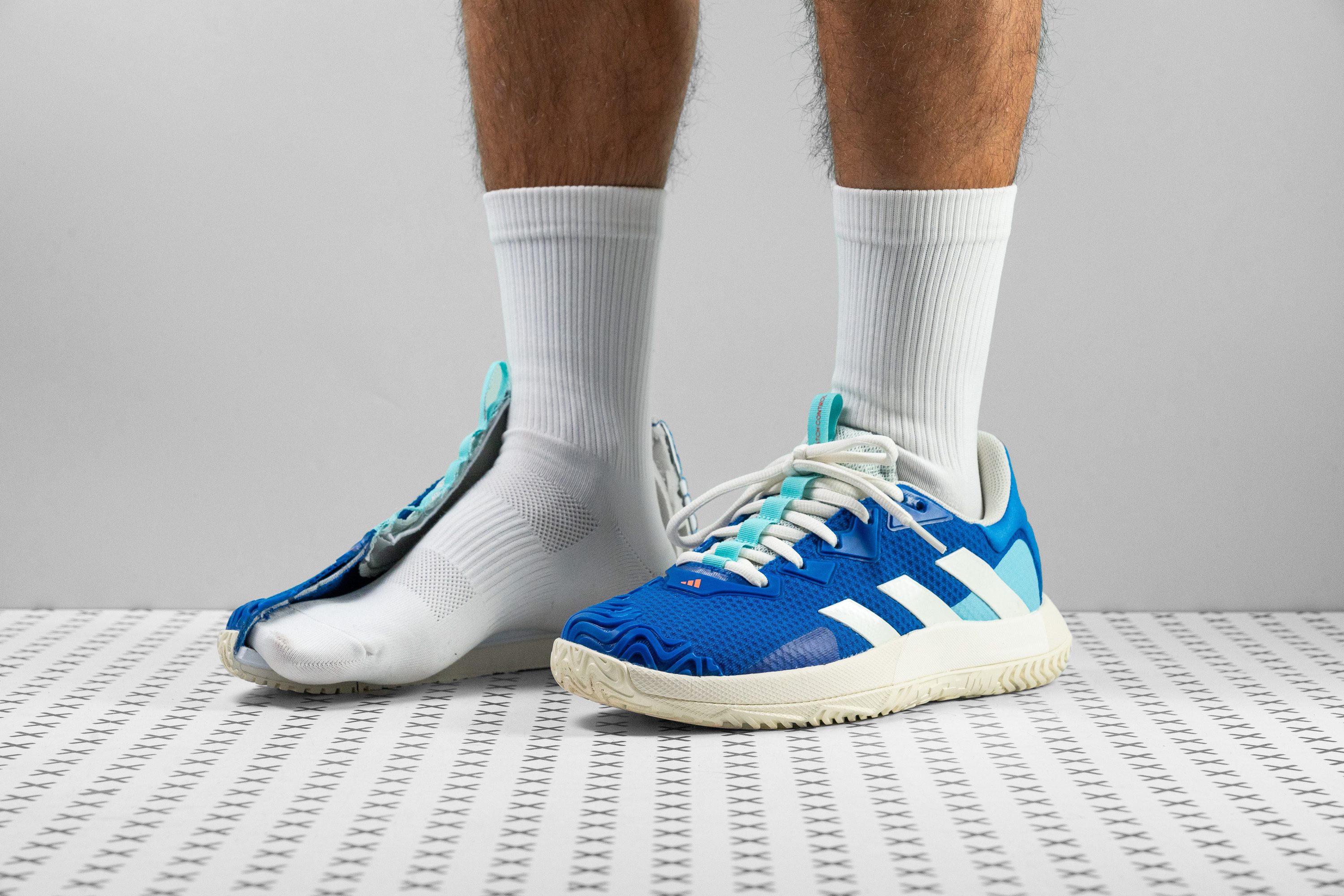












































What makes it the best?
The Adidas Solematch Control is ready to dominate tennis matches with the exceptional comfort, dependable stability, and game-ready traction it gave us on the court. It offers so much under its sleeve, but our lab results reveal its impact-dampening midsole makes it stand out. Among flat-footed tennis shoes, it leads in shock absorption.
The midsole protected us from harsh landings while offering a well-planted sensation underfoot through its below-average 26.7/17.3 mm stack. What enhances comfort is its strain-reducing cushion, which received a high 106 SA or shock absorption score in the heel.
We had no issue with missteps or losing composure because the rigid structure and wide base offer secure and controlled footwork during aggressive movements. The shoe greatly resists twisting, evidenced by its perfect torsional rigidity rating in the lab, and keeps us centered. Our caliper confirms the platform is indeed wide at 116.7/90.3 mm.
Meanwhile, the outsole delivers precise brakes that allow us to move boldly. It offers reassuring traction, and we have no complaints! Our traction test confirms our experience with a high friction coefficient of 0.83.
Sadly, this pair’s comfort will only shine in cooler weather. With a low 3/5 breathability score, it will feel too stuffy for humid summer matches outdoors.
Pros
- Lighter than average
- Very good ground feel
- Great impact protection
- Springy Bounce cushioning
- Responsive insole
- Comfortably flexible
- Stable platform for a speed shoe
- Exceptionally durable upper and outsole
- Incredibly grippy
- Good for wide feet
Cons
- Not so breathable
- No snappy push-offs (no shank)
- Not for narrow feet
Best budget tennis shoes for flat feet
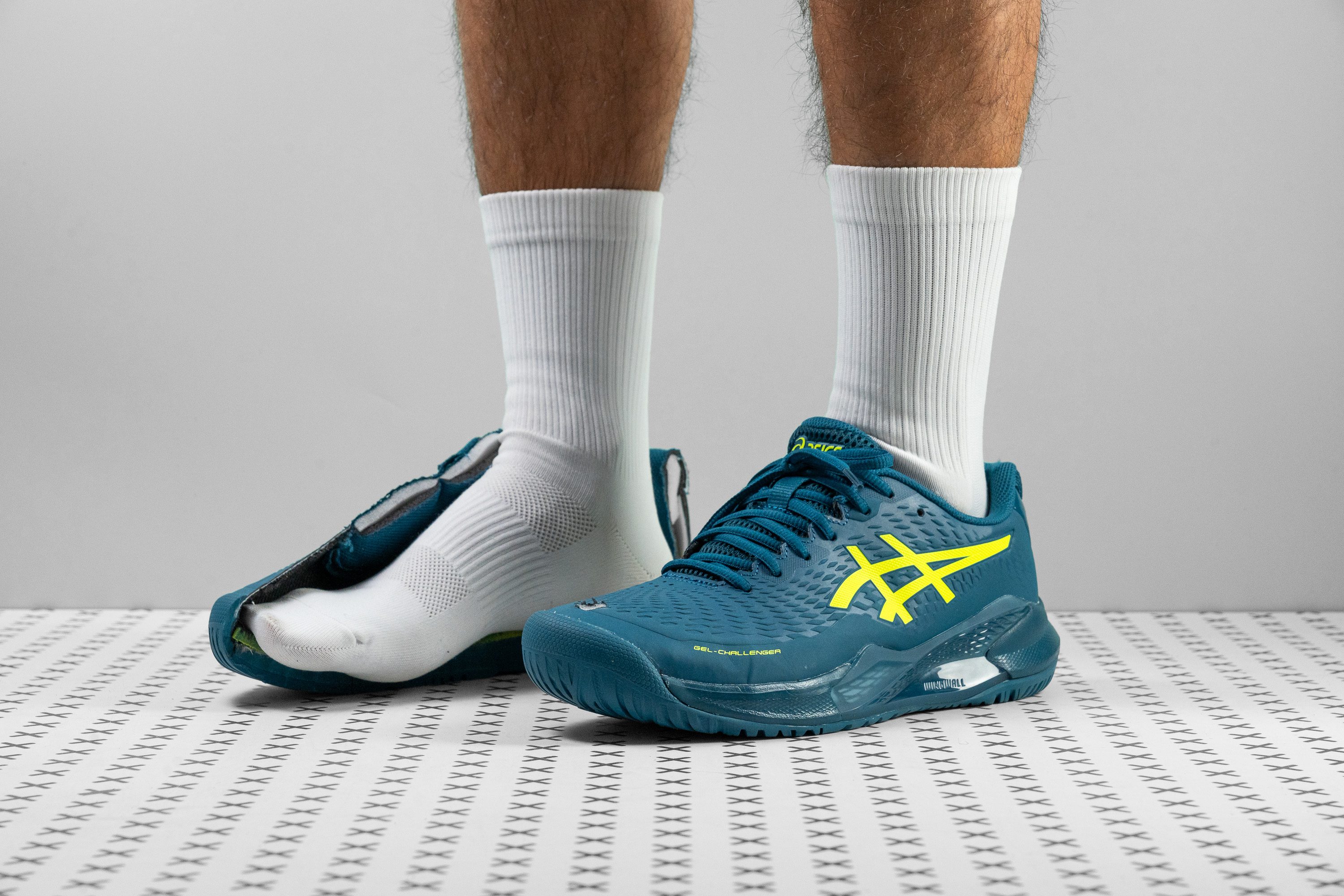











































What makes it the best?
In our playtests, we experienced an awesome combination of agility and stability in the ASICS Gel Challenger 14. We proved its arch and ankle support through its firm base and strong midfoot resistance, while control is enhanced through its lightness, flexible build, and grippy outsole. At $100, it’s 26.5% cheaper than the average tennis shoe, making it our best budget tennis shoe for flat feet.
With a high 31.3 HA durometer reading, the foam is 9.4% firmer than average. The platform keeps us surefooted since it doesn't collapse, while the GEL unit adds some bounce to our strides.
Stability is further enhanced by the shoe’s high level of torsional rigidity. The DYNAWALL system has no give whatsoever, so we awarded it the highest 5/5 score. It felt impossible to lose our balance in its secure foothold. We were in control of our footwork the whole time because the grippy base allowed us to slide and stop as needed.
Thankfully, the forefoot is less resistant since the support ends in this area. With flexibility at par with average, it’s easy to bend our feet when sprinting. Also, the shoe never felt like a burden because of its light 12.5 oz (354g) build.
With subpar performance in our breathability and durability tests, the upper still has room for improvement.
Pros
- Excellent stability and arch support
- Super hard-wearing outsole
- Grip of a more expensive tennis shoe
- Light for a stability-oriented shoe
- Reliable impact protection
- Plush and cushy in-shoe feel
Cons
- Lacks breathability
- Upper is not so abrasion-resistant
Do you need tennis shoes for flat feet?
This guide is meant for educational purposes only. Please consult a doctor if you experience any foot pain or discomfort.
When you have a case of flat feet (aka low or fallen arches), it means that your feet have no visible arches between the heel and the ball of the foot. The entire sole of the foot touches the ground when standing.
Flat feet can be flexible or rigid:
- Flexible: The foot arches disappear when you are standing but they are visible when sitting or standing on tiptoes. There is usually no foot pain.
- Rigid: The foot arches are not visible at all times. This type often feels stiff and painful but is also less common.
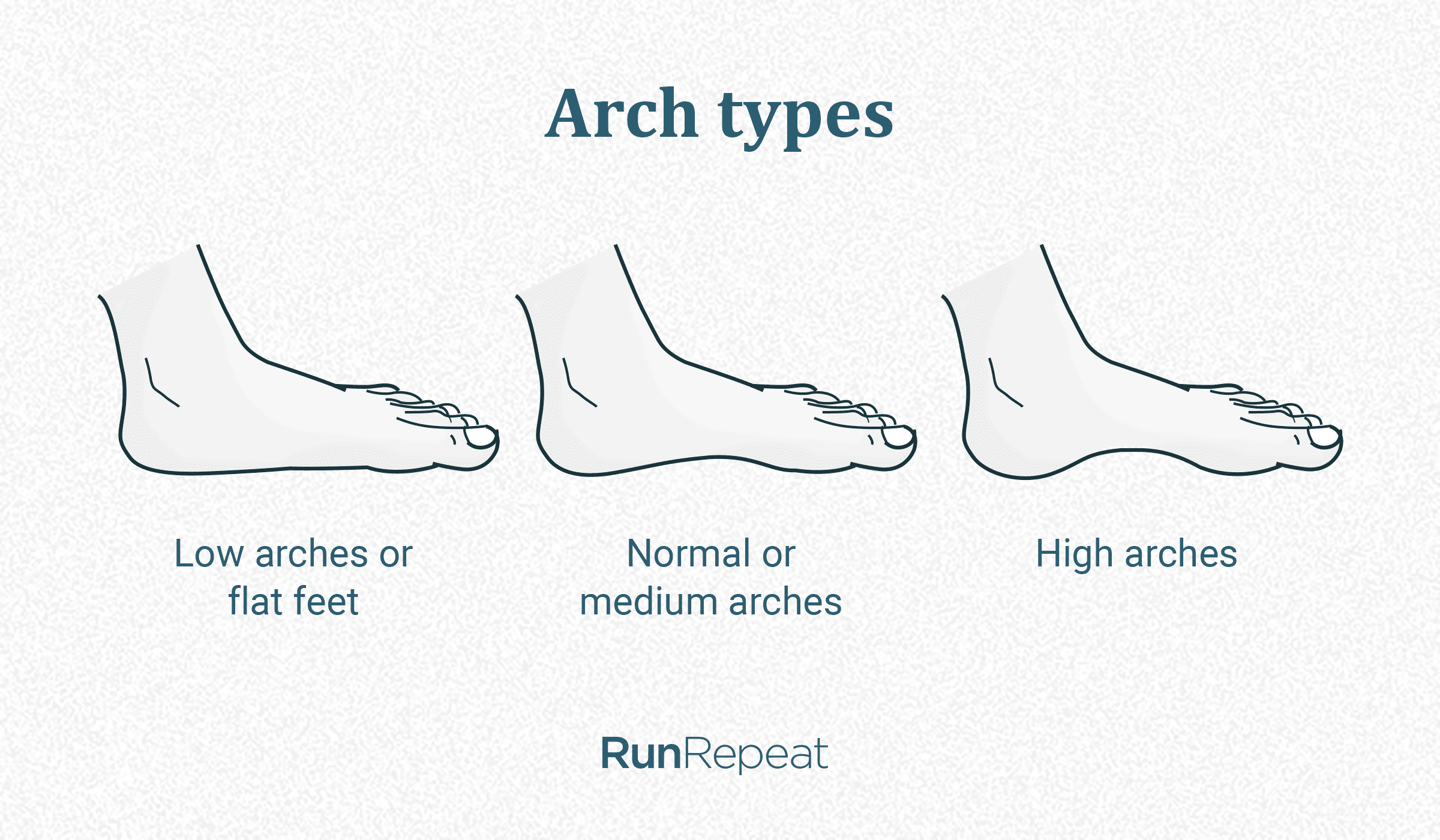
Studies show that about 20-30% of the general population have flat feet and it happens to be more common among individuals with obesity and women over 40 years old.
The degree of pain and discomfort associated with flat feet varies greatly and some tennis players may not experience them at all. That’s why the mere fact of having flat feet doesn’t mean that you need special tennis shoes.
However, if this condition is accompanied by excessive inward rolling of the foot (overpronation), it makes sense to choose more supportive shoes. As a dynamic sport, tennis involves very forceful lateral movements and flat feet may be one of the risk factors for injury. Overpronation places more stress on the ankles contributing to the risk of ankle rolls and even sprains.
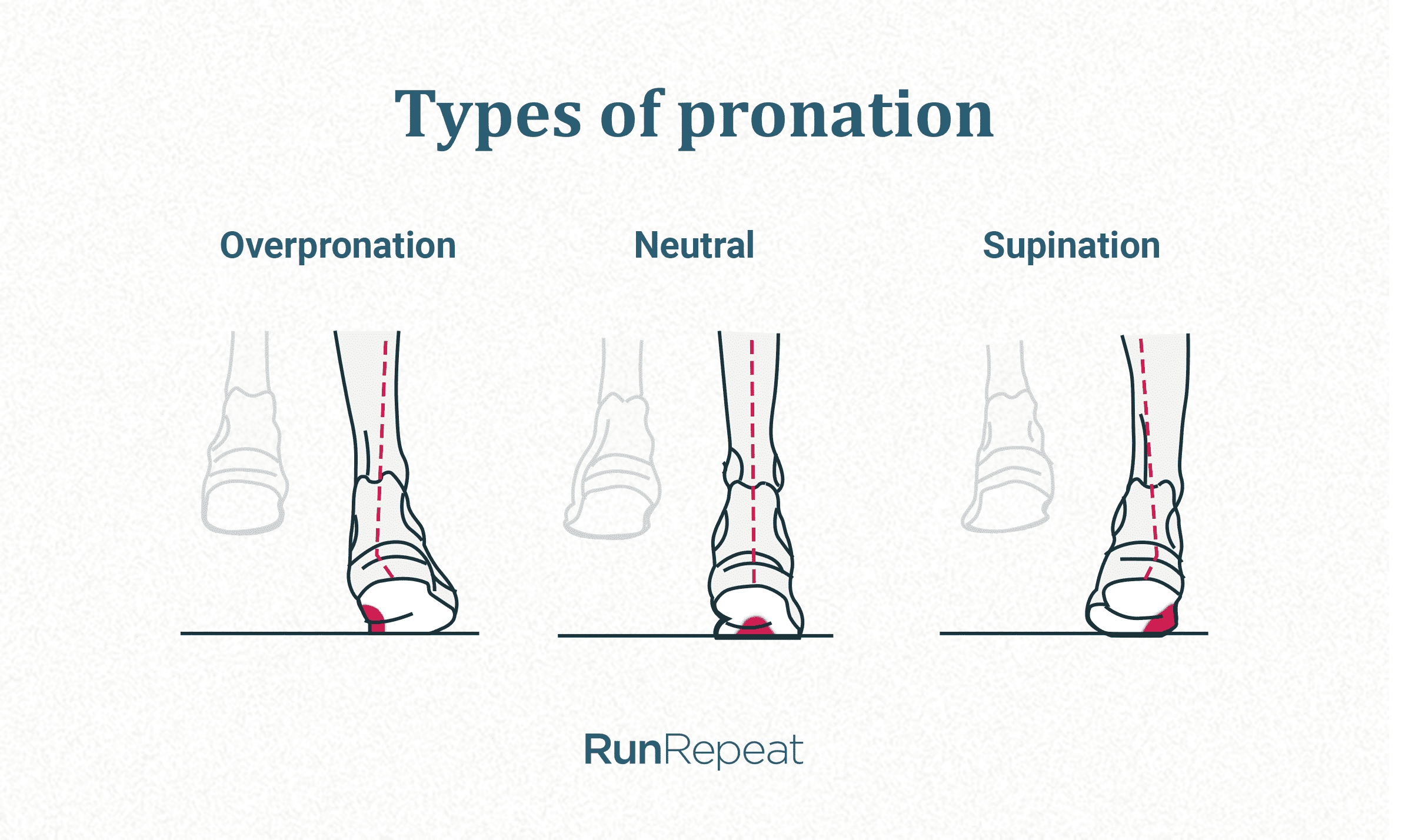
If you have flat feet and overpronation and feel like you could use that added stability and support, here is what to look for in tennis shoes:
- High torsional rigidity (the shoe’s stiff midfoot doesn’t allow you to twist it)
- Stiff and padded heel counter (the shoe holds the rearfoot very securely)
- Wide platform with flanges (there is no chance of foot spilling over the sole)
On the flip side, here are the shoes to avoid:
- Very pliable and forgiving shoes
- Soft and squishy cushioning
- Narrow fit in the midfoot
What is a good tennis shoe for flat feet
To compensate for the misalignment in the feet and ankles, we highly recommend choosing tennis shoes that are geared towards stability as opposed to lightweight and nimble options.
Example of a stability tennis shoe
Stability tennis shoes are packed with supportive features like stiff shanks, sidewalls, and cages to provide the highest levels of lateral stability.
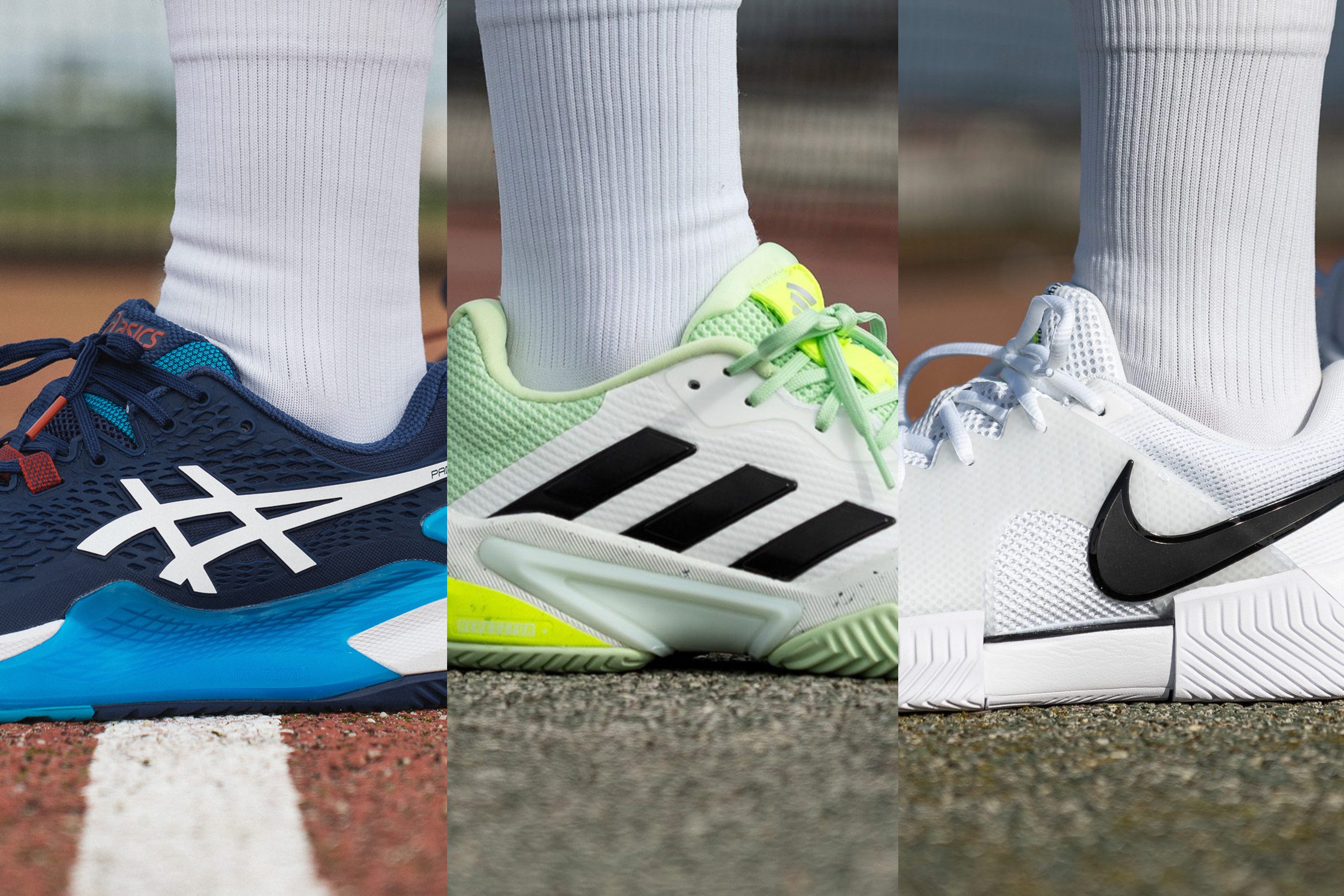
High torsional rigidity
What is one of the telltale signs of a supportive shoe that won’t let your foot buckle at the most crucial moment of the rally? Its core is so rigid that you can’t easily twist it with your bare hands. In other words, it has a very high level of torsional rigidity.
In our lab, we take each tennis shoe through a manual twisting test in which we rate its stiffness on a 1-5 scale. Shoes that get a score of less than 4 or 5 don’t make it to our shortlist for flat foot recommendations.
Stiff and padded heel counter
A secure heel lockdown is a must for any tennis player, especially if they have flat feet. But it becomes increasingly important when ankle stability is at risk.
In some stability tennis shoes, you will see large plastic heel counters on the outside of the rearfoot, while in others, it is embedded into the shoe’s heel collar. But no matter the design, it is the shoe’s rearfoot stiffness that counts and we test the latter with our manual push-and-squeeze test.
Again, no tennis shoes that scored below 4 or 5 make it to our flat foot catalog.
It is equally important to consider the shoe’s collar padding. There should be enough foam to wrap around your heels and ankles and make them sink deeper into the shoe. This will minimize the wiggle room for impromptu foot play and heel shifting inside the shoe.
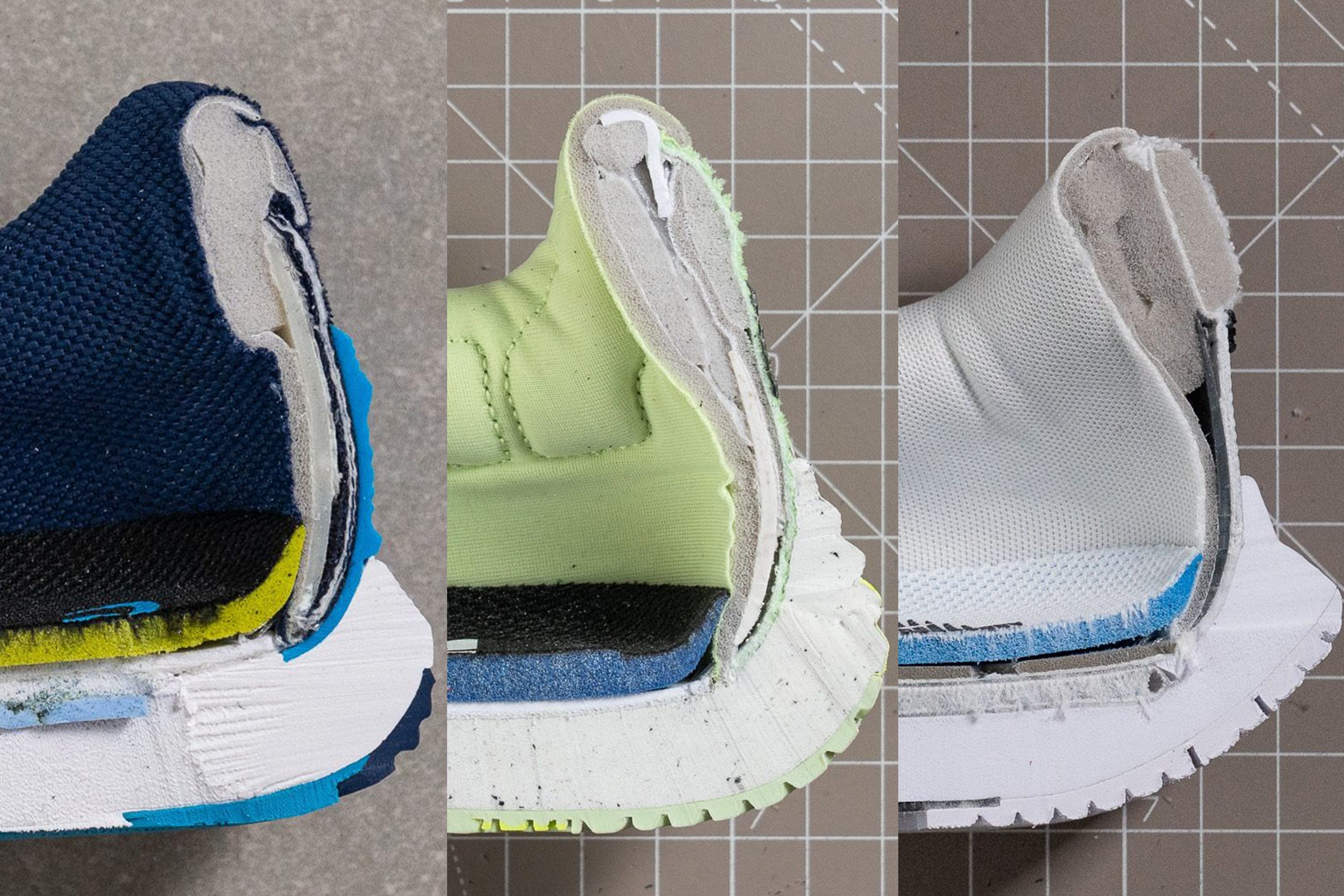
Wide platform
When your foot is pancake flat, it naturally takes up a greater area because its entire sole is touching the shoe’s platform.
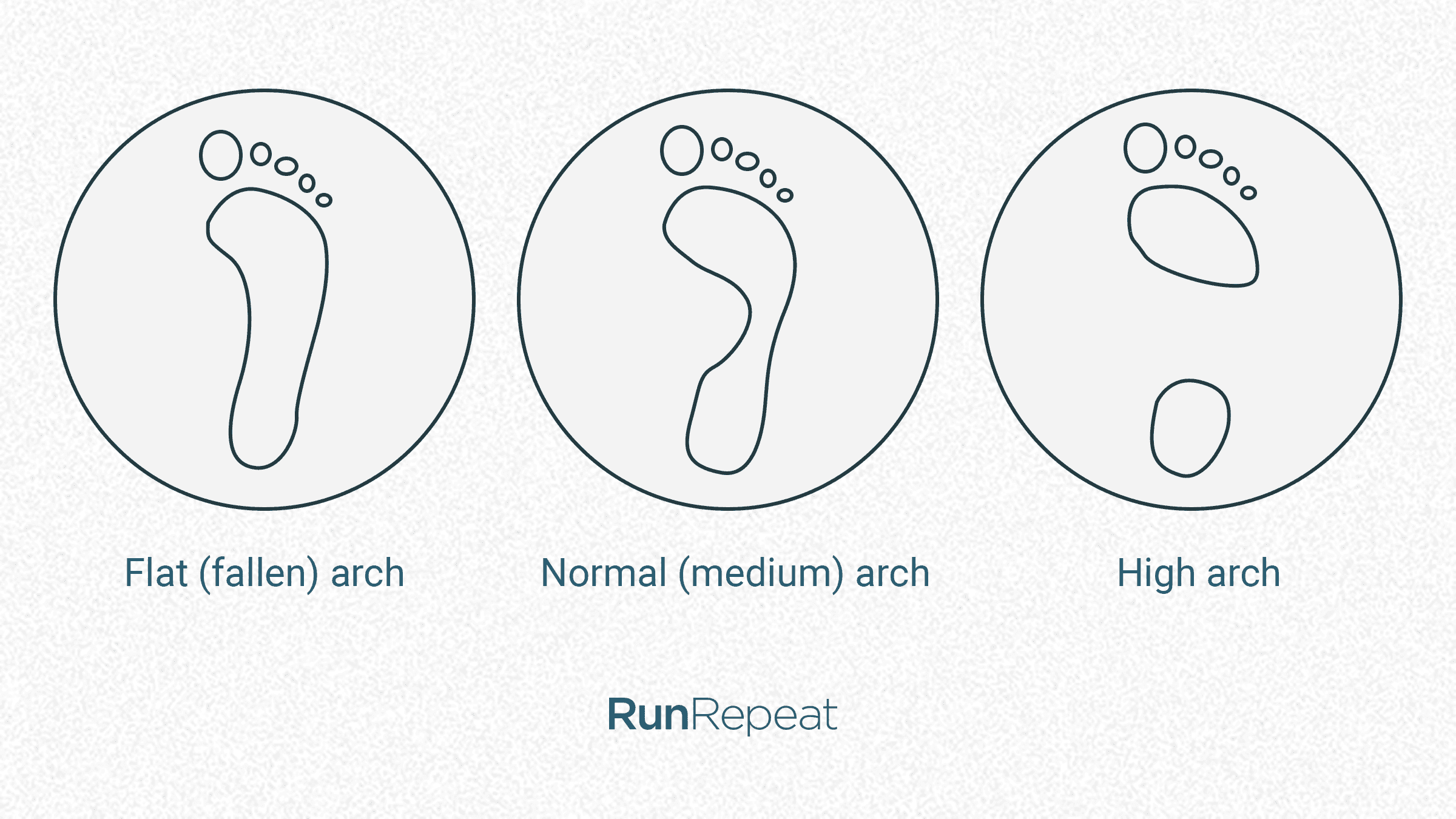
In that case, you not only need more space to plant the entire foot inside the shoe but also enough of a ‘buffer’ platform around it to avoid any foot spilling over the sole. That’s where sole flares, or flanges, come in to play.
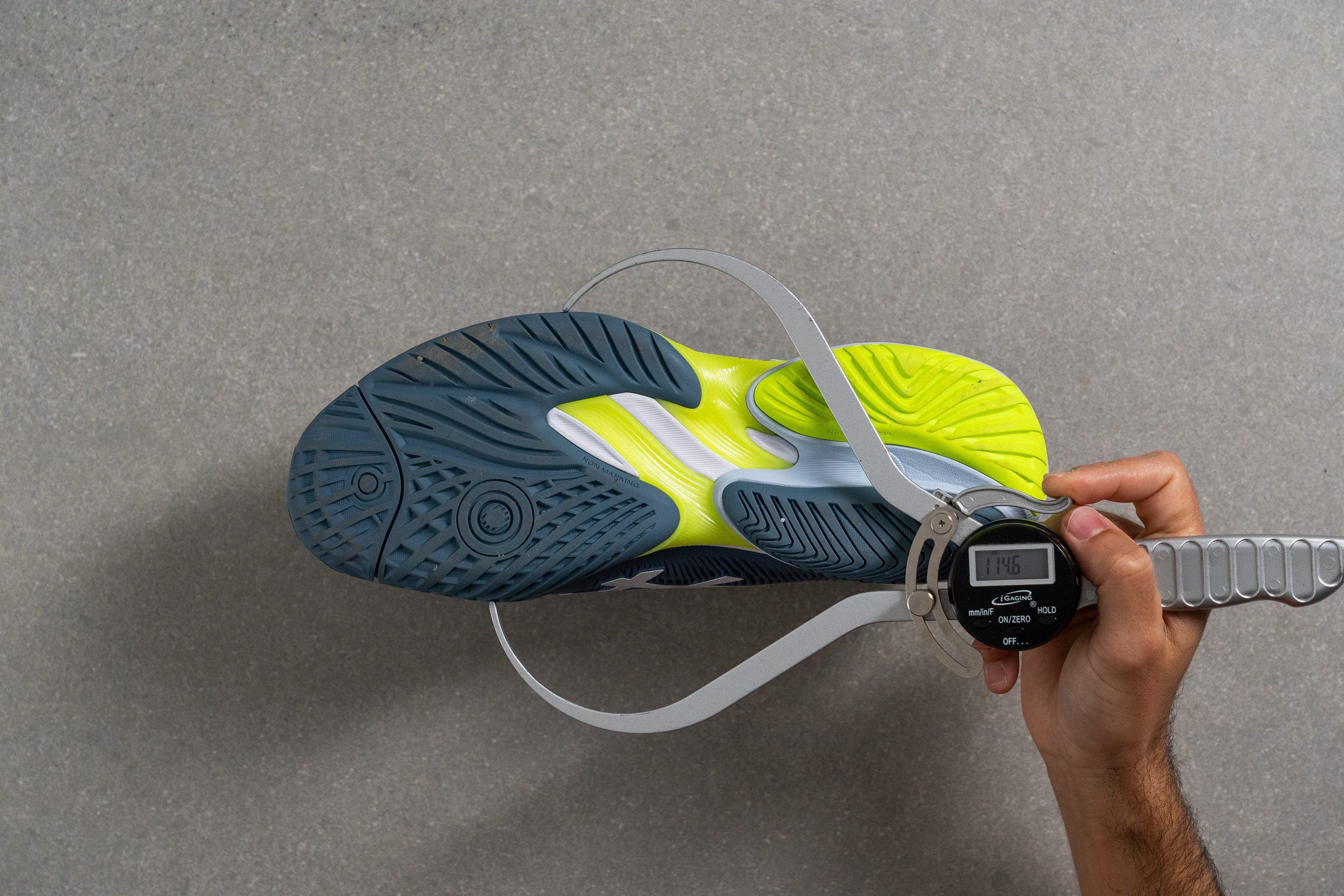
We use a digital caliper to measure the widest areas of each shoe’s midsole both in the forefoot and in the heel.
Believe it or not but the difference between the narrowest and the widest measurements in our extensive database is as great as 12 mm in the forefoot and 17 mm in the heel! Those extra milimeters can be pretty tangible on the court when you need more area to land and push off surefootedly.
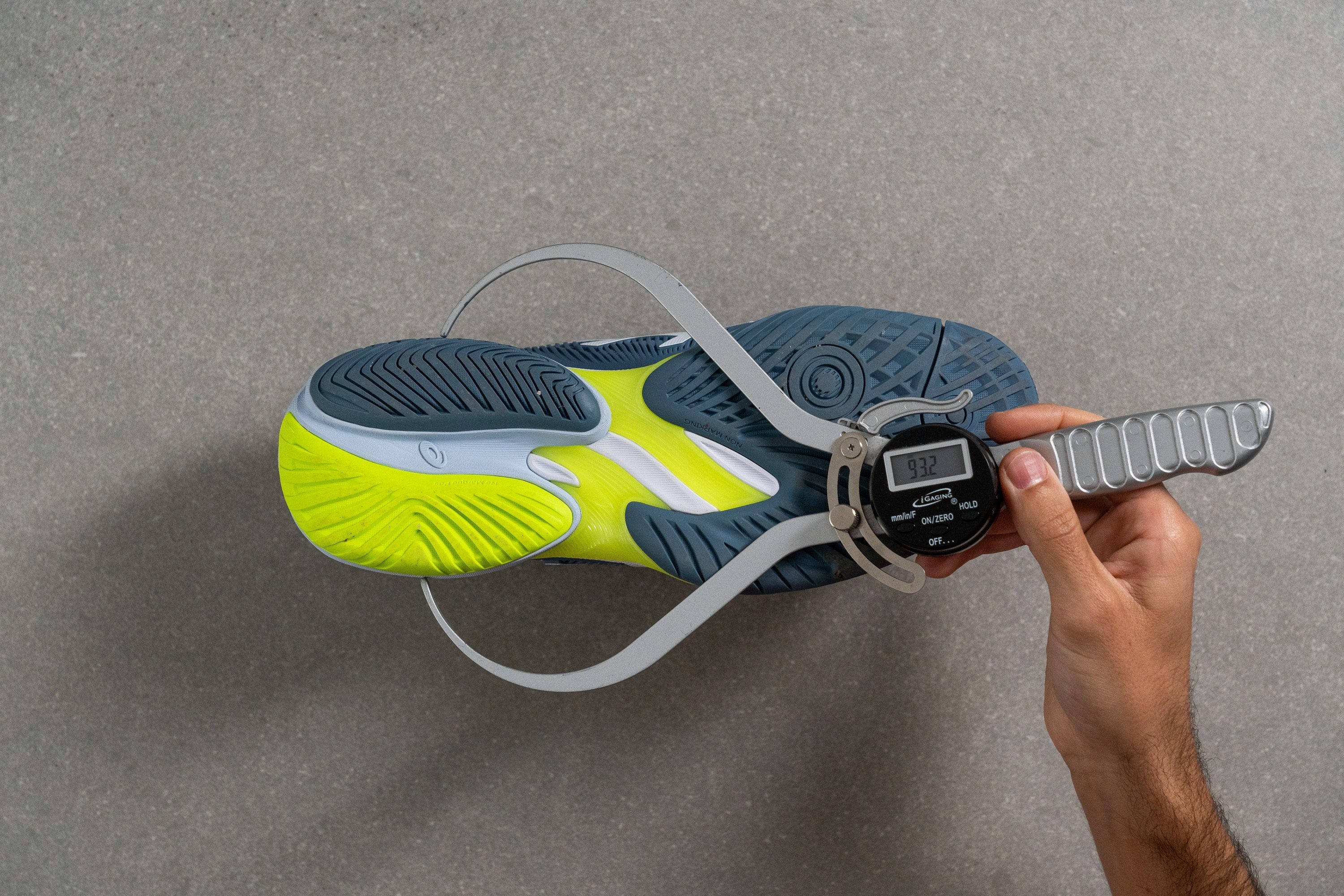
Tennis shoes for flat AND wide feet
It is not uncommon to be blessed with both flat and wide feet. The fallen arch makes the foot splay out more resulting in a broader foot shape in general. That’s why you should avoid tennis shoes that fit snug in the midfoot and in the toebox.
But how do you know the shoe’s fit without trying it on in person?
We have developed a proprietary method for measuring each tennis shoe’s interior space with the help of gel. Filling the shoe’s toebox with liquid gel, we keep it in the fridge until the mold is solid and then measure its dimensions with a caliper.
To get a better idea of the shoe’s fit, we measure the gel mold in three areas:
- shoe width in the widest part of the mold
- toebox width in the big toe area
- toebox height (vertical space in the toe area)
Having measured dozens of tennis shoe molds, we found that the difference between the widest and the narrowest shoes in the same size (always Men's US 9, medium width) can go up to 10 mm!
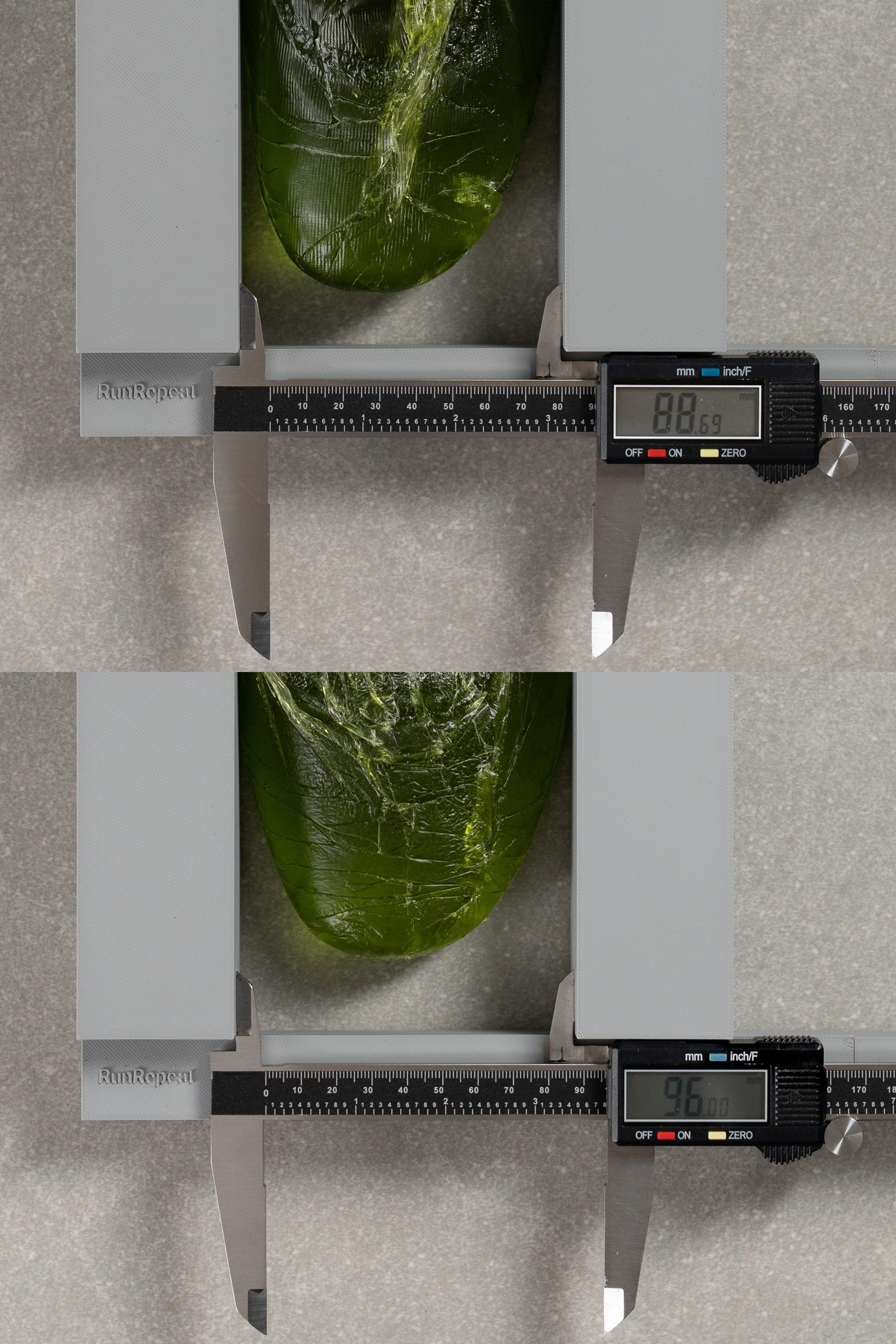
What’s more, the shoe’s toebox shape can be either more tapered (pointy) or more rounded and accommodating. We highly recommend the latter if you often experience any toe cramping or have toe deformities like bunions and bunionettes.
But please note that we are measuring all shoes in a men’s D medium width and US size 9. So these are all shoes that have a roomier fit in their standard default width. You can expand your options by looking at tennis shoes in wide (2E for men/D for women) and extra wide (4E for men/2E for women) variants. Unfortunately, not many brands offer these alternatives but ASICS and New Balance are some of them.
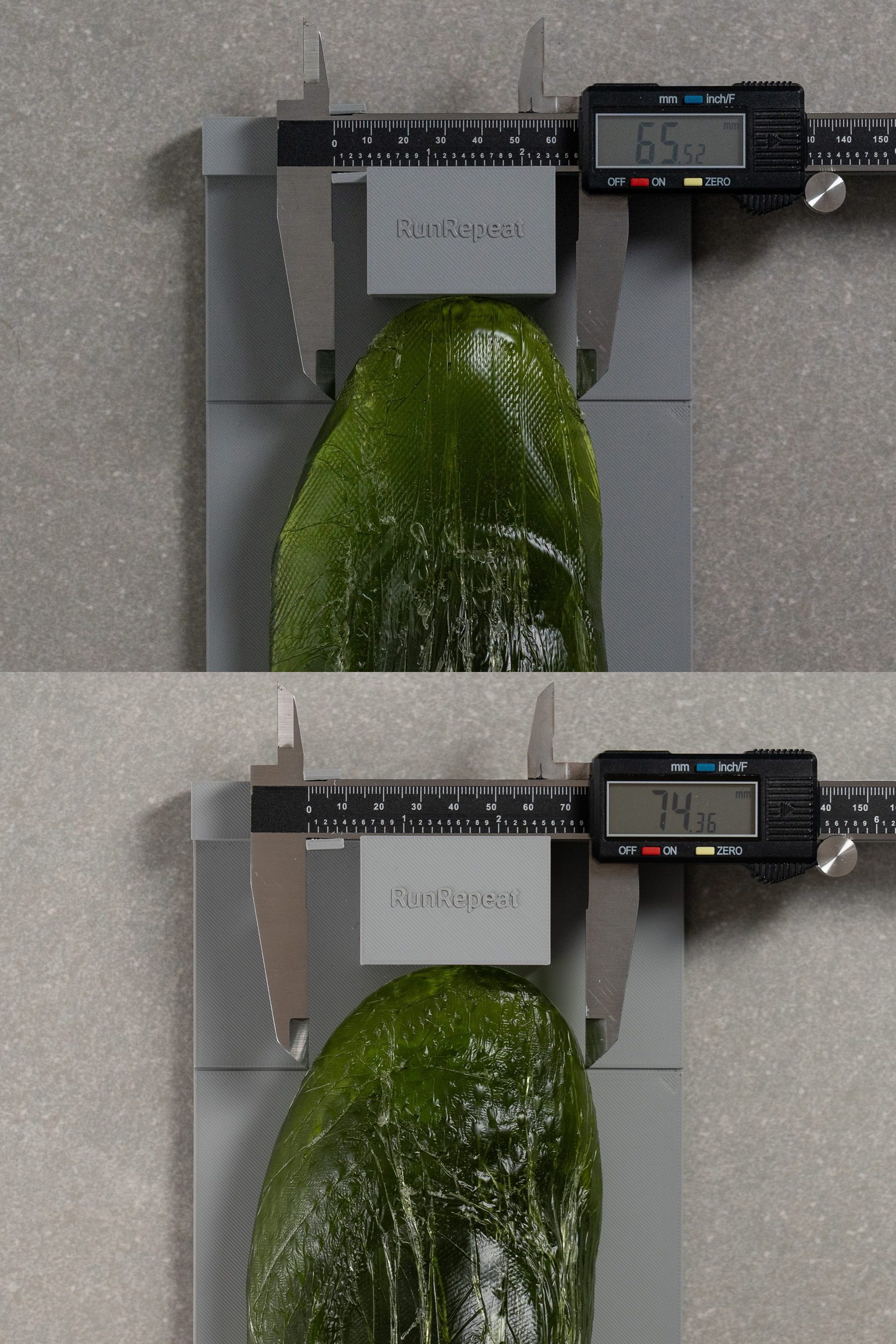
Players with various toe concerns and conditions, such as black toenails or hammer toes, are very likely to appreciate more vertical toebox space too.
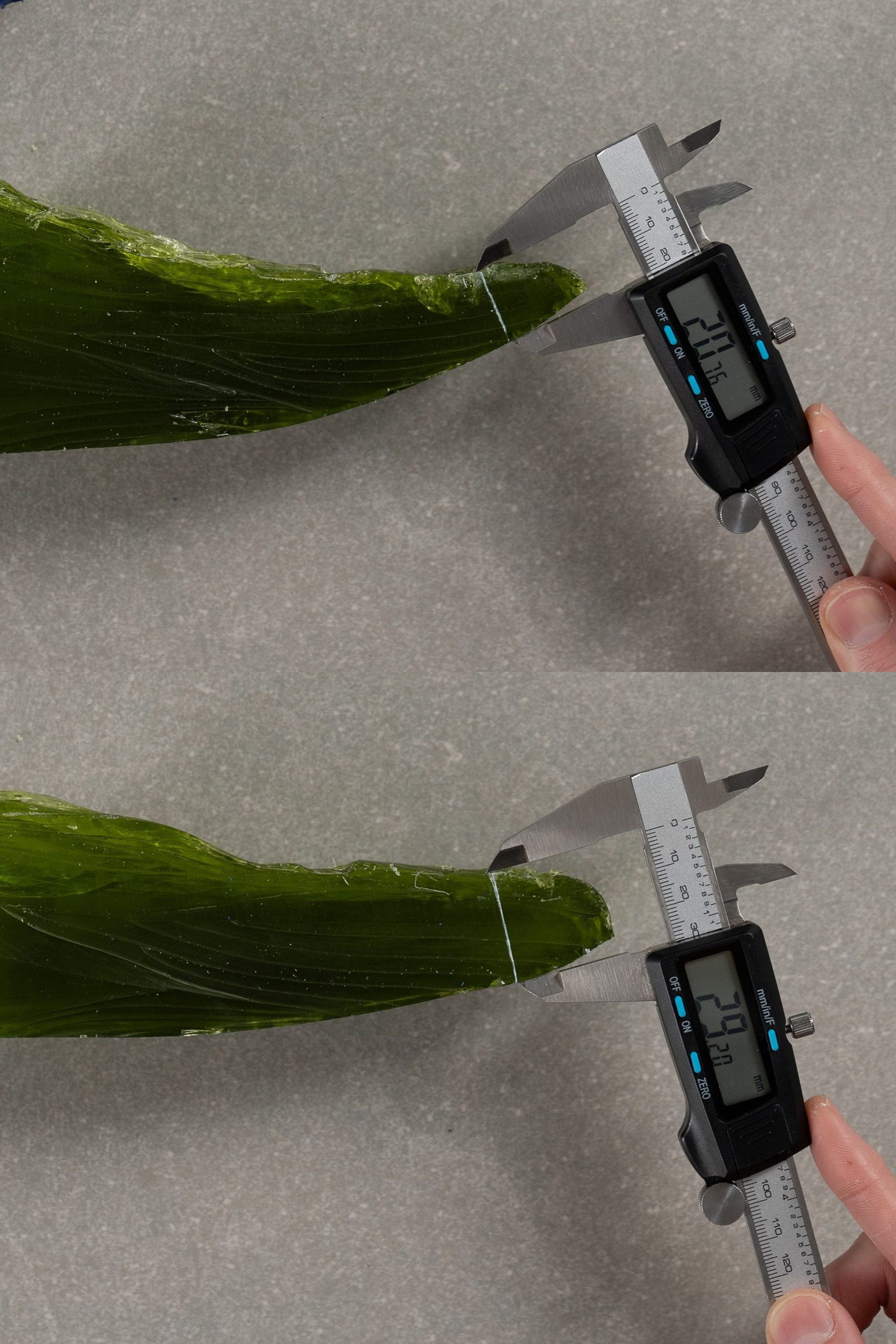
Weight: Are tennis shoes for flat feet heavier?
With so many supportive elements built into them, it is only reasonable to expect that tennis shoes for flat feet are heftier. But is that really so?
At RunRepeat, we can easily check it by weighing each tennis shoe in the same size (men’s US 9).
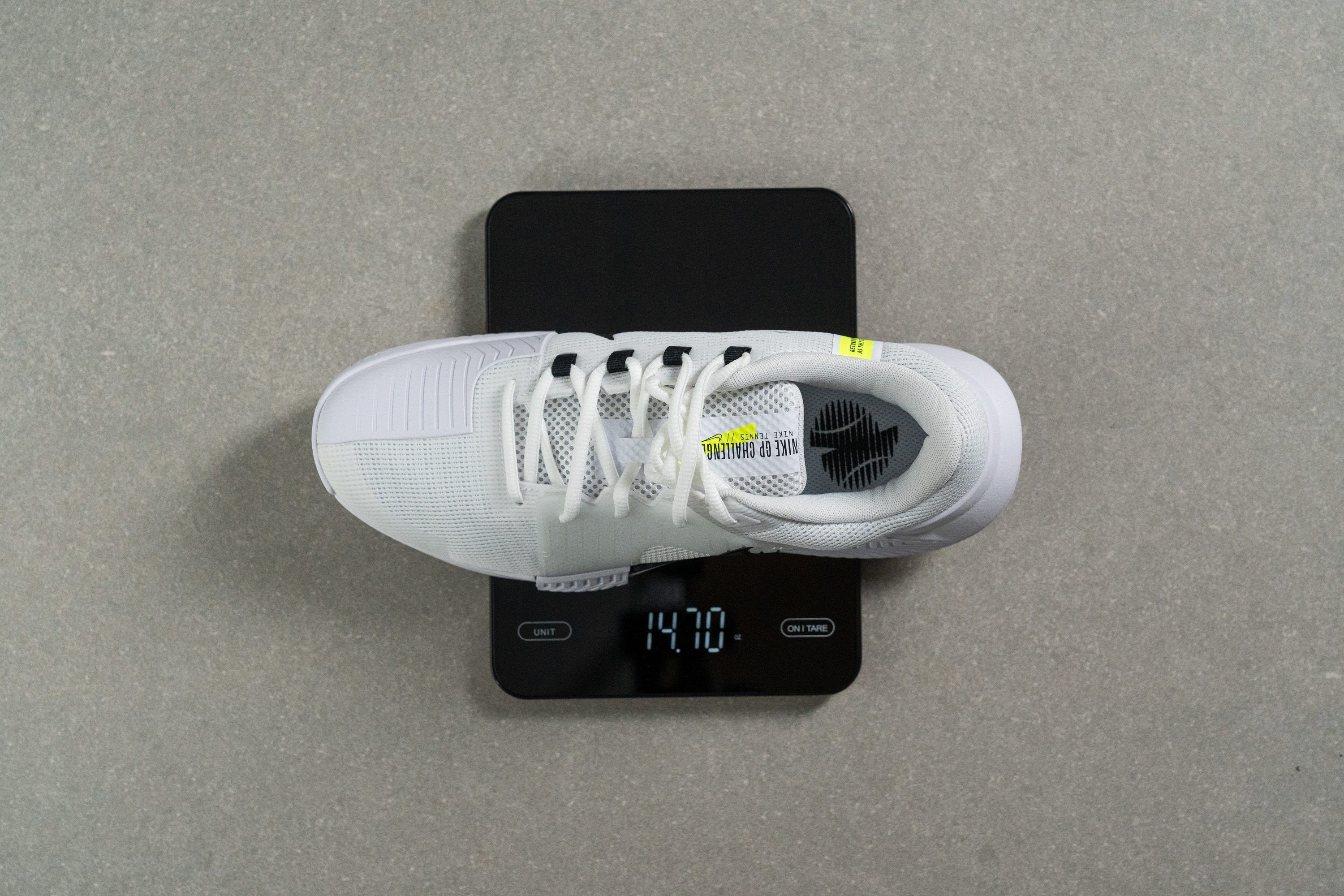
Based on dozens of scale measurements, we found that the average weight of tennis shoes for flat feet is almost the same as as that of all tennis shoes on average:
- All tennis shoes (average): 12.7 oz (360g)
- Tennis shoes for flat feet (average): 12.9 oz (366g)
But if you want to know which options are lighter than others, here is an overview of tennis shoes for flat feet sorted by weight (lighter to heavier):
Tennis shoes may not be enough to help flat feet
If you want to stay as surefooted as possible on the court, getting a quality pair of supportive tennis shoes is fundamental, flat feet or not.
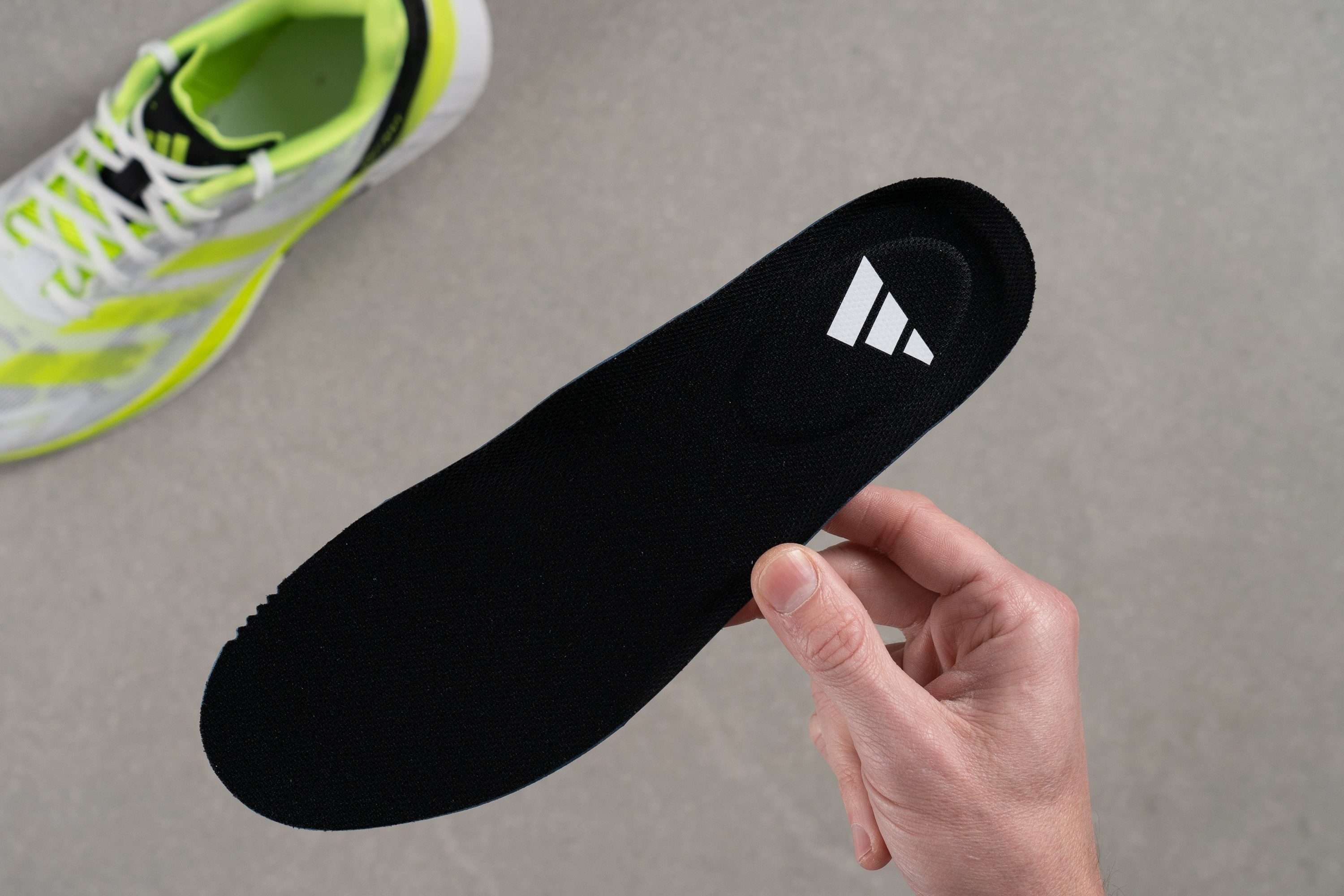
But, unfortunately, there is no magical pair of shoes that can relieve all of the nagging symptoms associated with flat feet. You may need to take some of the following actions as well:
- getting a custom orthotic that targets your specific discomfort or pain
- doing regular foot strengthening exercises or even work with a podiatrist or a physical therapist
- doing special warm up exercises before the match
